How to grow grapes?
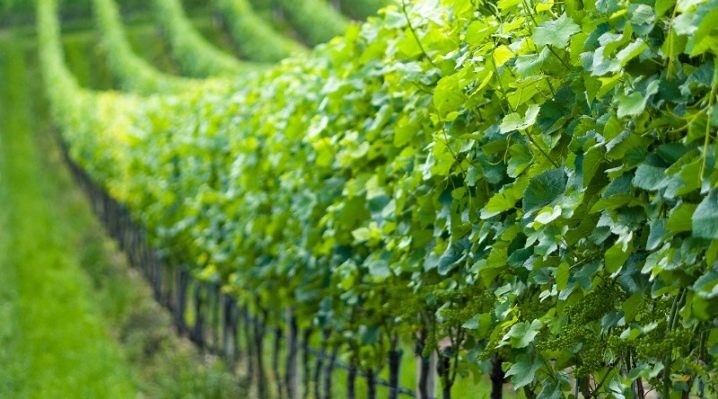
The well-known barbaric felling of vineyards in an anti-alcohol campaign made such a product as grapes scarce for a while. Today, again, many are striving to grow this crop, including in their personal plots.
In the article, we will tell you how to choose the right place for a vineyard, which variety is better to plant, in what way the culture will take root better, and how to care for it at home, depending on the soil and other conditions.
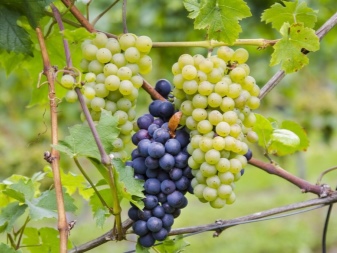

Grape variety selection
When choosing a variety, first of all, be guided by what needs you are going to grow grapes for: for winemaking, these will be wine varieties, table varieties - they will help replenish the body with the necessary supply of vitamins. There are seedless grapes - these include "Kishmish".
And also there are black grapes ("Moldova", "Viking", "Codryanka" and others), pink ("Original", "Lydia" and others), white ("Laura", "Shasla Gailunasa", "Kesha" and others ). Take into account the peculiarities of the region of residence, as well as the peculiarities of wintering culture.

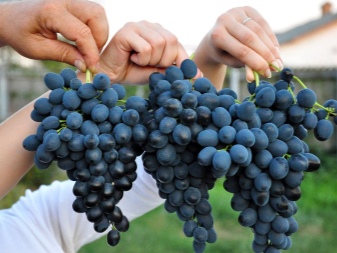
The right place to plant outdoors
The grapes will grow on almost any soil in the garden, only on depleted soils it is advisable to add humus and nutrients to the pit. If the area is shady, choose the appropriate varieties, although in general the culture is sun-loving, and to get sweet berries you need to choose the sunny side in the country. Many people plant grapes so that the vine grows on a fence or on a gazebo, and they plant it on a pergola - this is quite acceptable. In this case, you can get a double benefit: to have a berry and create a "curtain" on the fence or a shadow in the gazebo.
If there is a building on the site, choose the south side of it. If the site is sloping, place the vine rows in a south-to-north direction.
However, the right place is not the key to successful grape cultivation. You need to know other technological features of growing this crop.
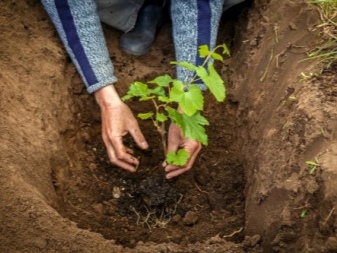

Planting methods
You can grow grapes using various methods. Let's consider the most popular methods.
Seeds
Any grape seed can sprout and end up with a good vine, if it is in the right conditions - this is the theory of agrotechnical cultivation of this crop. However, if you decide to start breeding grapes through seeds, choose hybrid seeds (although such varieties are rare). It is believed that the seeds of hybrid varieties are more resistant to diseases, and that they are suitable for growing grapes. Only well-ripe berries with a brownish tint (preferably large) are suitable for high-quality seed material.
Seeds are removed from the selected fruits, washed and the seeds are wrapped in a damp linen cloth or gauze cloth. Placed in this form in a refrigerator. As soon as you see cracks on the bones, know: this is a signal that it is time to plant them in the ground. To do this, prepare a pot of sand and humus. After planting, the pot of grape seed is placed so that sunlight makes its way to it. If there is not enough space for the sprouts by May, the grown plants are transplanted into larger containers and taken out into the air (balcony, veranda, and so on).
Transplanting into open ground occurs in the early autumn period.
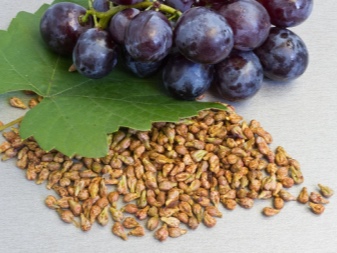

Cuttings
The method of propagation of grapes by cuttings or, as the people say, from a branch is quite well known and is also applicable by gardeners. You need to act in the fall, after all the foliage on the bush has fallen: choose the desired vine, cut off a stalk 50-60 cm long (diameter - no more than 1 cm) from it so that it has 5-8 eyes. Such cuttings are stored in a cool room in a humid environment: either in wet sand, or wrapped in a damp cloth. Immediately before planting the prepared planting material in the ground, the cuttings are placed in a special solution to stimulate root growth.
As soon as the roots have broken through, the cuttings are planted in the ground. Now the sprouts need good watering and warm weather (above +20 degrees) - under these conditions, the cuttings will take root and grow, forming a full-fledged grape bush in several seasons.
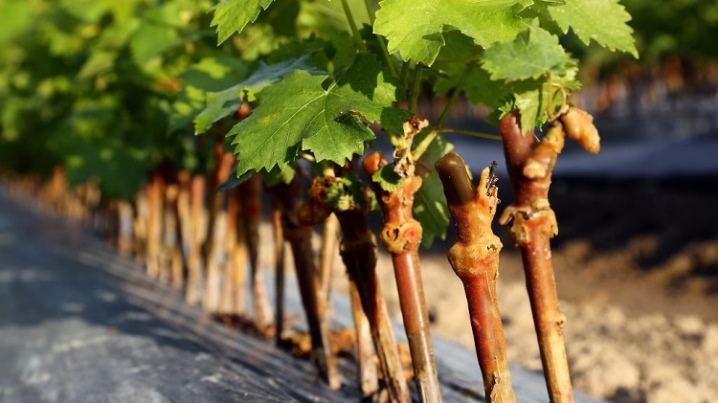
Saplings
Propagation of grapes by seedlings is the most popular method among gardeners. If everything is done correctly, the guarantee that you will get a good grape bush that will bear fruit is almost one hundred percent. Moreover, in this way, it is possible to plant grape plantations both in the spring and in the autumn.
All actions are the same, only in the fall after planting the seedlings need to be insulated, protecting them from the cold. In this method, the preparation of the pit is of great importance: as experienced growers say, this will ensure 90% success. Here are the basic rules to follow:
- on clay soil, add small pieces of brick or crushed stone to the hole;
- such drainage will not be needed on sandy loam, but such soil will not interfere with enriching it with nitrogen;
- prepare humus for sandy soils; compost can be poured into the pit and fertilized with superphosphate.
Well, when choosing seedlings, pay attention to the fact that the length of the roots is at least 10 cm, and the growth consisted of 4-6 eyes (buds). The planting material should not be sluggish, touch the roots: they should be elastic - only in this case, and subject to all agrotechnical rules, will it be possible to grow healthy bushes of new grapes.
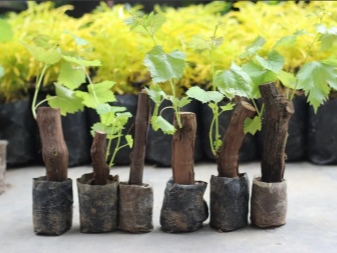
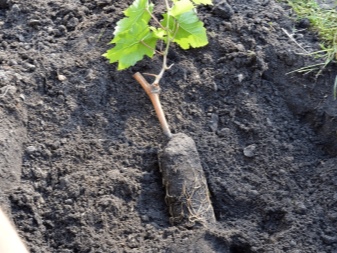
How does it grow in a greenhouse?
Growing grapes in a greenhouse can give good results. Usually, for growing this crop in greenhouse conditions, a complex of transparent polycarbonate is built, which perfectly protects the vine from bad weather, at the same time allowing you to swim in the rays of the sun. The plant itself in the greenhouse is grown either in containers or directly in the ground. At the time of planting, the temperature in the greenhouse complex should be at least +10 degrees, and as the seedlings grow, it should be gradually raised.
So, by the time the buds open, the thermometer should show at least +24 during the day, and +16 at night. When setting fruits and ripening berries, +30 is allowed. It is possible to regulate the temperature regime in greenhouses without special equipment, for example, by opening and closing a window, forced ventilation.
In case of strong heat, it is enough to cover the greenhouse with a special darkening net, it is sold in any specialized store.
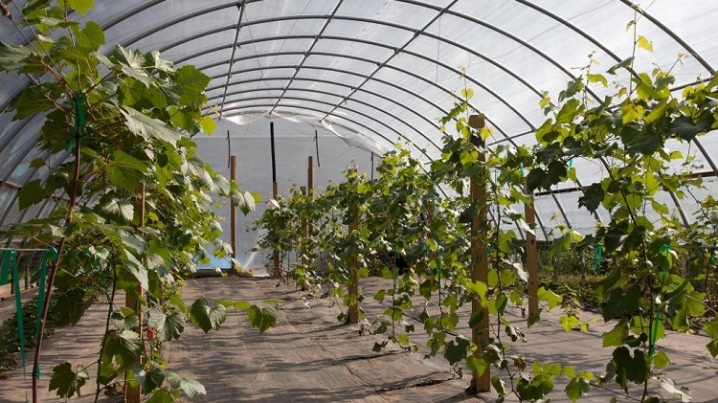
Planting scheme and technology
Grapes are planted in the ground when there is a certainty that there will be no more frost. For many regions, this is a border crossing from April to May, although in the southern area it is possible to plant crops in October-November. For Siberian lands, this is the second decade of June. Experienced growers are advised to purchase planting material from trusted suppliers. Depending on the variety, seedlings are planted in a trench dug 1 meter deep and 0.8 m wide.
In the trench, it is necessary to create an appropriate nutrient medium for the seedling (for this, you can mix humus with manure, ash and earth in equal proportions), and be sure to water the planting. You can mulch.The distance between the rows can be within 1-2 meters - it all depends on the spreading of the variety (ask when buying what properties your chosen variety has).
At the dacha, the vine is usually fixed to a support so that it braids as it grows.
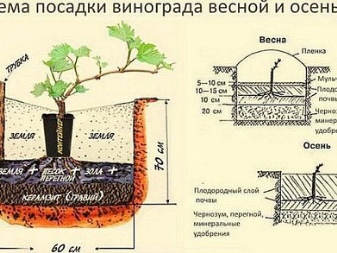
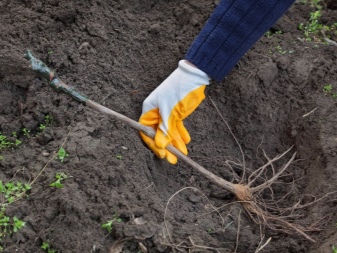
Necessary conditions for growth
Grapes are an unpretentious culture, it can be grown in one place for a long time, but you should still adhere to the rules of care.
Watering
The grapes may well have enough moisture from natural precipitation, but it does not come from year to year, and it all depends on the location of the grape plantation. Often, in order to get an excellent harvest, large, juicy and sweet berries, you cannot do without additional watering.
The plant needs moisture in the first year for normal fixation in the ground. Growing in the fall requires a careful approach to watering. Excess moisture is fraught with rotting of the root system, therefore, with good rains, you should not additionally water.

Top dressing
The grapes receive nutrients from the soil. The culture is fed most often with phosphorus, nitrogen-potassium fertilizers, iron, boron, copper, as well as mineral salts and molybdenum. The vine also tolerates organic matter well - within reason, you can improve the soil with compost, manure or a peat layer.
But compost from the same grape branches is not recommended for use in this case. This fertilizer can only harm the bush: slow down its growth and provoke various diseases.
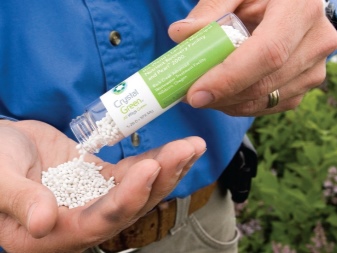

Pruning
Pruning vines is an important part of grape care. The bush is capable of producing many shoots, and if it is not promptly cleaned of unnecessary "children", then there will not be enough food for everyone, there will be no development, and over time the plant may die.
Even if the root system can support a densely growing vine, then the yield from such a bush will be minimal, and the berries are very small. The growth in grapes is cut by 40-90%, and it is absolutely wrong when they say that the more shoots on a grape bush, the higher the yield will be - stepchildren must be removed without regret.
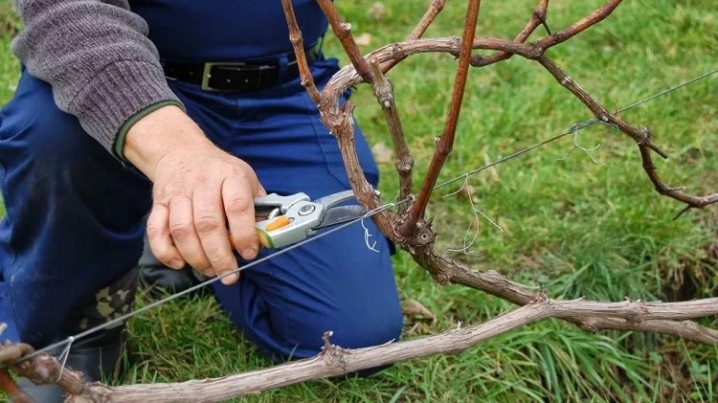
Time and period of fruiting
How many years after planting grapes, you can see the long-awaited harvest - this question, perhaps, interests everyone who decided to start growing this crop. In fact, if all agrotechnical standards are observed during planting and grooming, the vine can please with berries already in the second year after planting, but you can get a richer harvest starting from the third season.
Flowers may appear in the first year of the development of the bush, but they must be destroyed, since they will only bring harm. The seedling will not bear fruit, but flowering will weaken it, because the flowers will begin to draw out nutrients in their favor. Biologists have found that it can take from 10 to 25 years from the first harvest to the dying off of the vine.
Taking into account the peculiarities of the variety and compliance with the rules of care, the period can be adjusted towards the life expectancy of the grape bush and its fruiting.
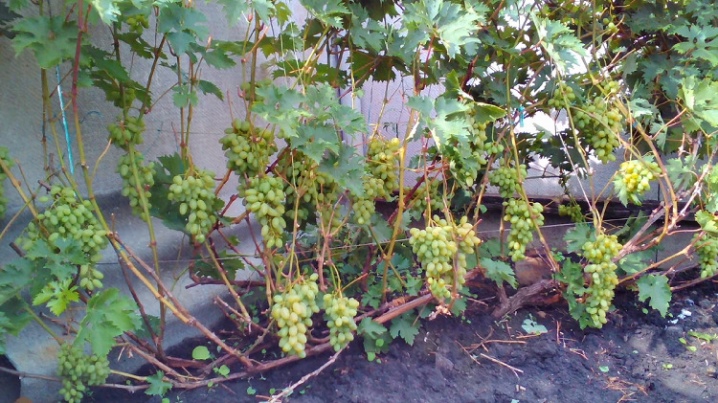
Correct wintering
Ensuring proper wintering of grapes means creating a good base for the next harvest. After the autumn pruning of the wound, the vines are treated with copper sulfate (a 3% solution is made). If frosts are expected below zero degrees, it is already advisable to create a shelter for the grapes. You can protect bushes from cold and frost with polyethylene, pine branches, synthetic fabrics. Can also be covered with straw.
Just keep in mind that there is no need to rush with this matter: if you cover the vine too early, a fungus may develop, or the eyes will begin to flutter.
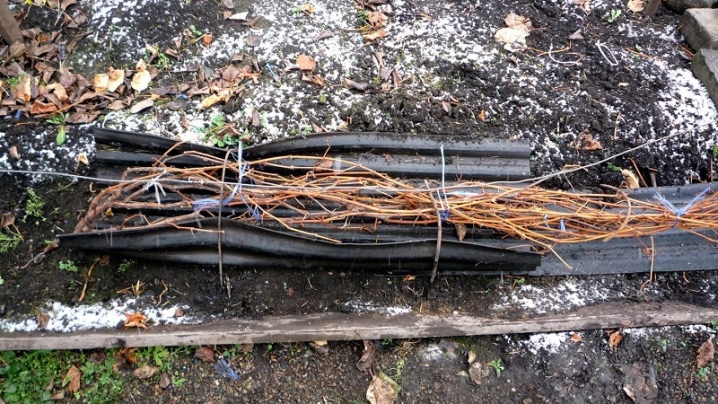
Diseases and pests
The vine can be attacked by pests such as voracious wasps, hornets and ticks (felt). Dangerous is the grape aphid, which sucks the juices from the root system, thereby completely destroying the bush. From diseases, grapes can "catch" rubella, black spot, white or gray rot, bacterial cancer and other diseases. Timely prevention - tillage of the soil and the plants themselves will help save the vine and the future harvest. By the way, grapes can get sick at different stages of their development. For example, already ripe clusters die from anthracnose and black spot.
It is believed that the grape culture grown in the southern regions is more susceptible to infection and disease. Features of growing decorative grapes Another name for decorative grapes is maiden grapes. It is so called because of the self-pollination of its flowers. On the territory of the Russian Federation, the Virginian variety (five-leafed) is planted more: it is frost-resistant and is accepted on any soil.
Among other advantages of this variety, the following are distinguished:
- its attractiveness throughout the season;
- rapid growth in height (2-3 m per year);
- able to form a kind of thick "curtain";
- resistant to cold weather;
- unpretentious to the habitat, equally well takes root and develops both in shady areas and on a sunny site.
The decorative Virginian variety differs from ordinary grapes in complex five-fingered leaves and small suckers on the antennae. Despite the listed advantages, this plant must be grown carefully and deliberately.
Maiden grape varieties (decorative) have the strongest root system, they are able to literally "capture" large areas, leaving no chance for other plants to develop, and a strong vine can eventually destroy even buildings, if allowed under the slate.
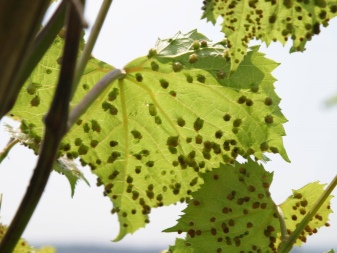
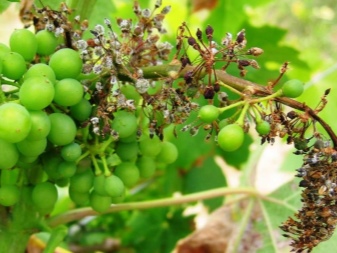
Helpful Tips for Beginners
Novice growers often make common mistakes therefore, we will outline some important points that are worth paying attention to those who decided to start growing grapes.
- Storage of cuttings. Do not wrap them up in plastic bags - this will mold the cuttings and rot the roots. Many amateur gardeners with no experience make this mistake. The cuttings are wrapped in wet gauze or stored in wet sand.
- Soaking planting material (cuttings)... Prepare melt water, or take regular tap water - and let it stand for several days. Soak the seedlings for no more than 48 hours at a water temperature of + 2 ... 3 degrees Celsius - this way they will retain all the nutrients. At lower temperatures, the vine will wither.
- Processing the roots of planting material... Before planting in open ground, the root system will not interfere with additional stimulation for growth. Use special preparations for this, experienced winegrowers recommend proven means, such as "Heteroauxin" or "Kornevin".
- Planting culture in the ground. You should not rush with this, even if the first leaves have already appeared on the handle. When the shoot grows quickly and produces leaves, it must be pinched over the third leaf, and planted when the roots appear. When planting - no nitrogen fertilization.
- Furrowing. To stimulate the growth of the root system, it is necessary to furrow the grape seedlings.
Do not be afraid of some opinions that it is very difficult to grow grapes in your country house, and this process is very laborious. In fact, this is not the case: if you follow all the planting rules, timing and agrotechnical care measures, you can feast on sweet berries for many years, preserve juice or enjoy a sip of homemade aromatic wine.
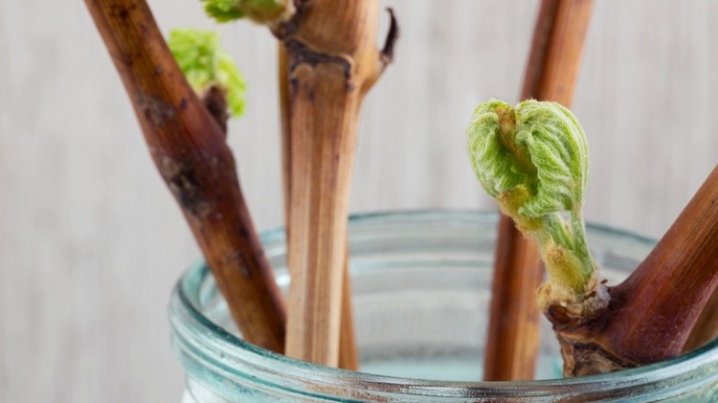













The comment was sent successfully.